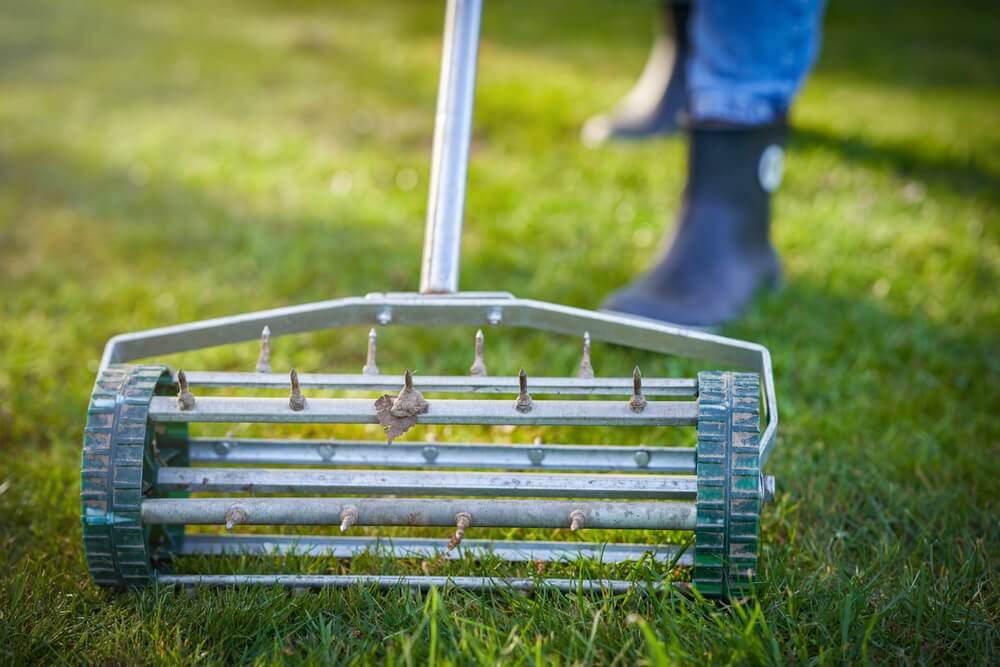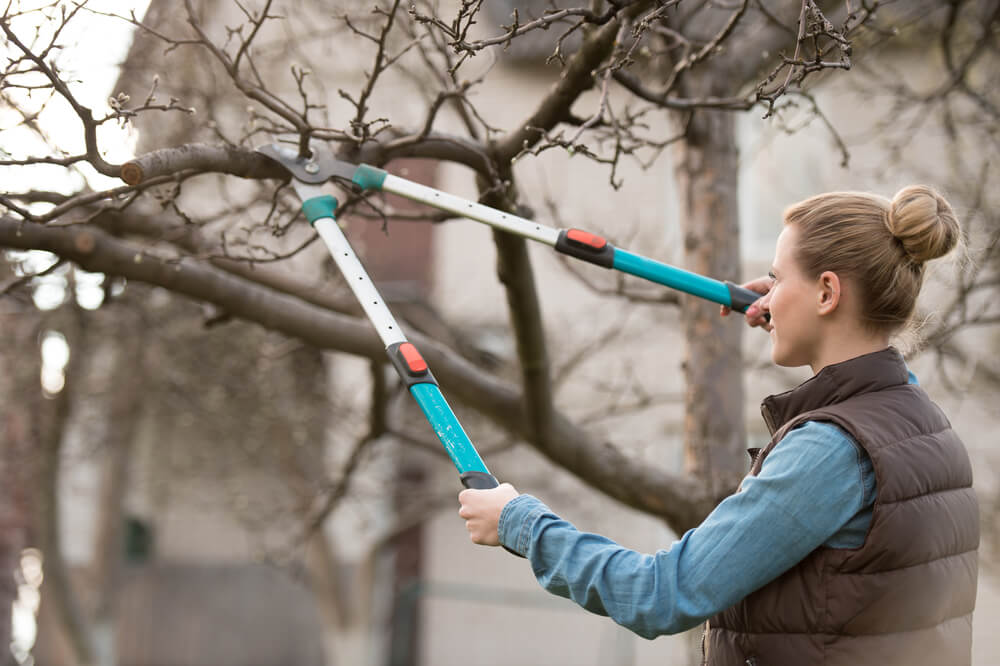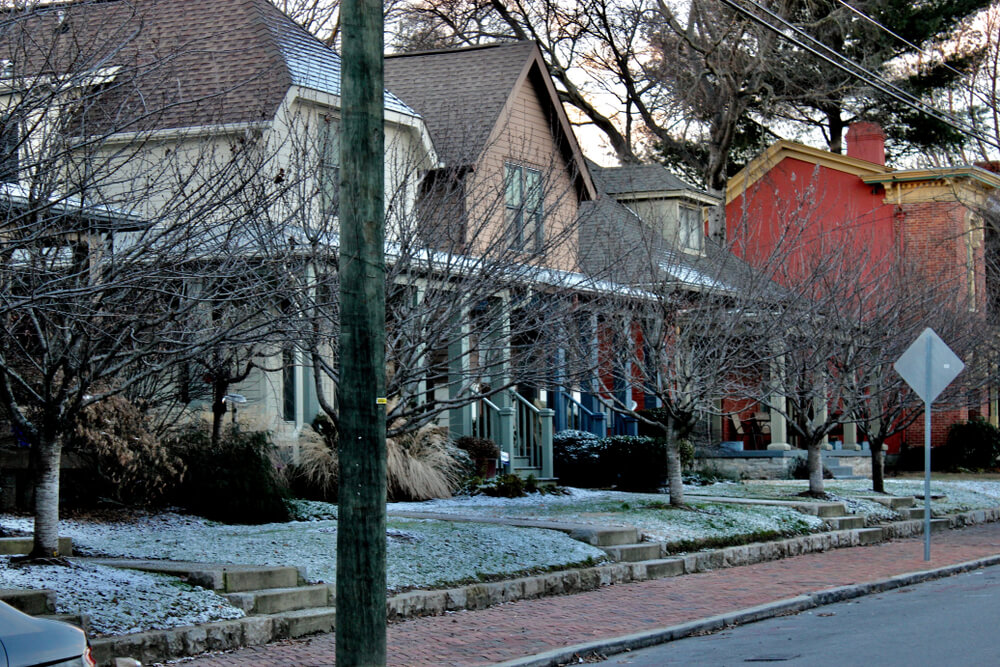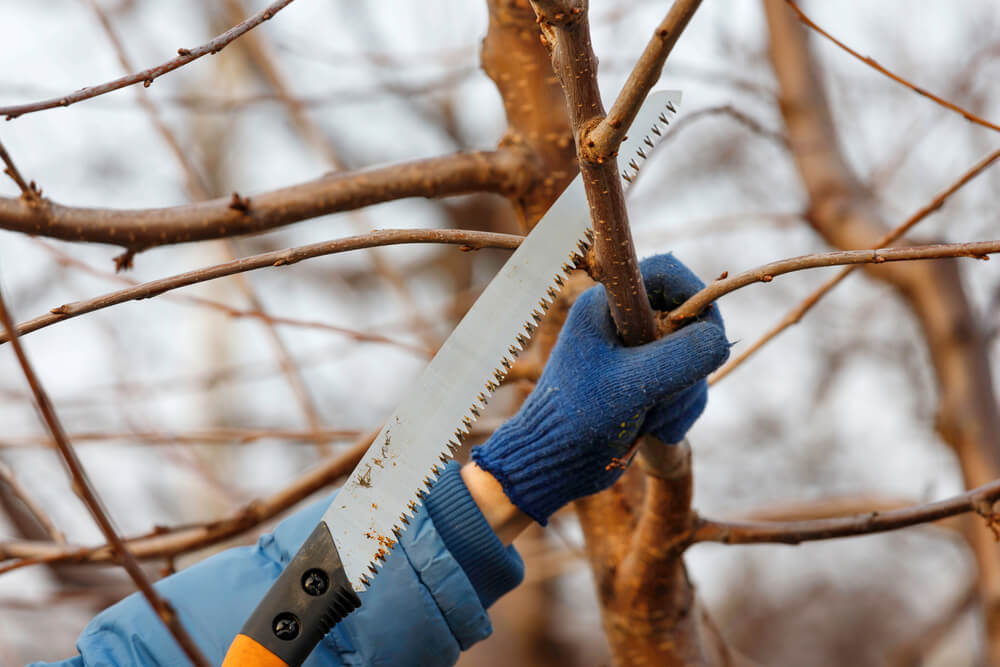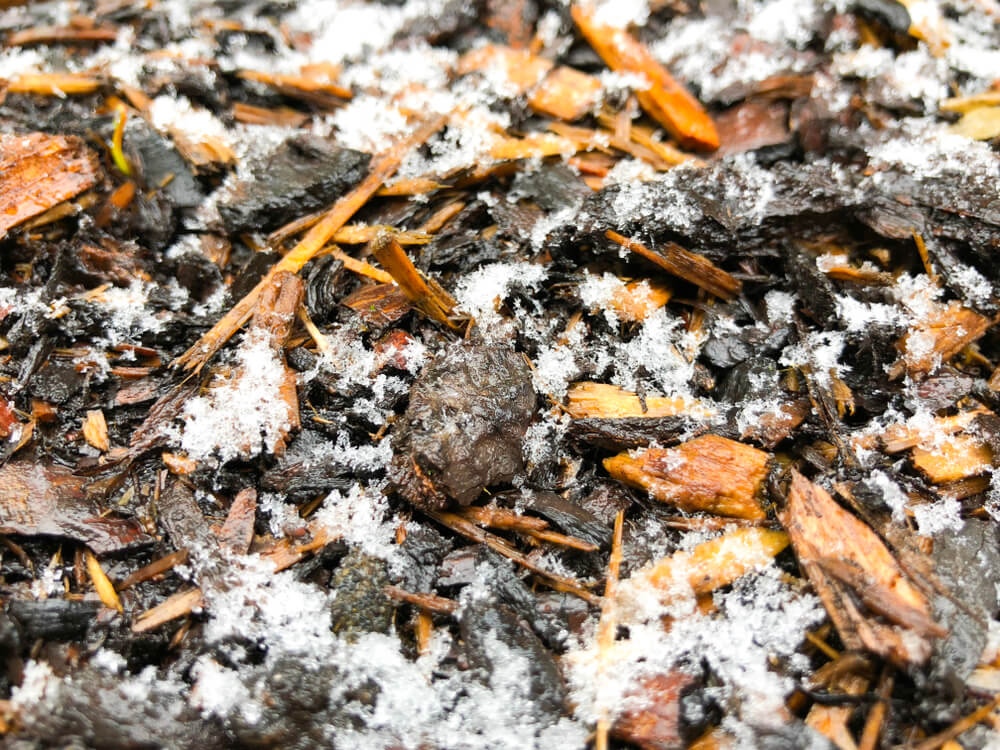Lawn aeration may not be something that you’re familiar with when it comes to maintaining your landscaping, but you absolutely should consider this beneficial practice for your lawn this year. Here’s everything you need to know about lawn aeration, from its many benefits to the cost and the best time of year to have it done.
What to Know About Lawn Aeration
What Is Lawn Aeration?
At its core, lawn aeration is a simple process aimed at bringing air to your lawn. The turf is pierced with small holes during the aeration process. These holes enable the soil to have better airflow, hydration, and nutrition if done properly. Your lawn’s health is determined by how well things are going inches beneath its surface. Healthy grass has deep roots that help secure it and provide proper hydration year-round. As time goes on, soil begins to compact and become denser. When that happens, it’s harder for grass roots to penetrate to the depths that they need, leaving you with a lawn that’s malnourished and unsightly. By perforating the ground with aeration, water and airflow help to encourage deeper root growth while also reducing the density of aerated soil.
Benefits of Lawn Aeration
The benefits of aerating your lawn are many, from the aesthetic to the practical. While greener, thicker, and healthier-looking grass are all desirable aeration outcomes, aeration can also help make sure your landscape remains durable and ready for whatever might come. Aerated lawns with deep grass roots are a lot less susceptible to flood damage, soil erosion, and pest problems. The deeper your roots go, the more secure your topsoil will be. During droughts or the wet season, that security is critical to keeping your lawn’s overall structure.
While it may sound simple enough, there’s a lot that needs to happen to ensure that aeration isn’t actually harming your landscaping. Lawn aeration is a process that needs to be planned for, and with Nashville weather being what it is, that’s sometimes pretty tricky. A landscaping company like The Parke Company has decades of experience in landscaping in this region, making sure your specific grass is properly aerated and overseeded properly and at the right time.
The Cost of Lawn Aeration
So how much does it cost to aerate a lawn? That price can vary based on a few factors. Overseeding is also often conducted during the aeration process—a lawn that is already growing is seeded to maximize new growth. The “over” aspect has two meanings: you’re seeding over existing grass and turf, and in the process applying more seed than is probably necessary in order to make the most of a lawn’s highest growth opportunity. Depending on the seed needed for your lawn, the total price of aeration may go up or down.
Aerating your lawn isn’t always going to run you the same amount of money depending on the size of your lawn, type of grass or grasses involved, and the time constraints a landscaper is working under. Lawn aeration cost is usually within the ballpark of $15-$17 per thousand square feet, but these figures can vary. The value you get as a homeowner far outweighs the relatively low cost of this lawn maintenance practice. Aeration is not expensive by any means, and it is an affordable way to help your lawn get the nutrition it needs. If you can’t afford a cutting-edge irrigation system or frequent pest mitigation, aerating your lawn is the best and most cost effective way to care for its health. That said, just because you have irrigation and are pest-free, don’t overlook the great benefits of aeration. If you’re invested in the overall health of your lawn and landscaping, seasonal aeration is a great option to explore.
When Should You Have Your Lawn Aerated?
So now that we know how aeration works and roughly how much it should cost, you might have more questions, including: what is the best time to aerate your lawn? This question is key, because aerating your lawn at the wrong time can actually open it up to damage. You’re making hundreds or thousands of holes in the soil, and in the wrong season or with the wrong grass, it can actually allow too much moisture or heat into the soil or give pests free access to your grass’s roots.
Seasons absolutely matter when aerating and overseeding, or just aerating on its own. But it’s not as simple as waiting for good weather or the right temperatures. Depending on the type of grass in your lawn, aeration might be good in the fall, spring, or even summer. For that reason, it’s important to opt for professional landscapers, rather than trying it yourself. Being able to properly identify the type of grass that makes up a lawn is a skill that not everyone has, but landscapers are well-versed in just that. Many Nashville lawns are composed of fescue grass, which is a hearty grass that can put up with extremes in temperature and varying degrees of drought. Fescue grass is best seeded in the fall—specifically in September and October, unless things prove milder for longer. Being able to see the future isn’t a talent many people have, but landscapers must do their best to make sure that the right weather conditions are on the horizon for maximum effectiveness.
But what if you have some other kind of grass? Bermuda grass, for instance, actually benefits from aeration in the spring or early summer, along with St. Augustine and buffalo grass, which are also popular in the south.
How Long Does It Take to See the Benefits of Aeration?
How quickly your lawn reaps the rewards of aeration can depend on a few factors. Most grass seed takes at least two weeks to fully germinate and grow, so don’t expect improvement overnight. With that said, you may be able to observe your lawn looking fuller by week 3, with the full results usually appearing in 6 to 8 weeks or less.
By now it should be clear that on the whole, lawn aeration is a beneficial, relatively inexpensive, and somewhat particular process in terms of timing. In other words, this is a best practice for your lawn that should always be overseen by landscaping professionals like The Parke Company.
Ready to schedule your free aeration consultation and get an estimate from the experts who have served Nashville for decades? Give The Parke Company a call today, and find out just when your lawn should be aerated and what to expect in terms of cost and its benefits for your landscape.

